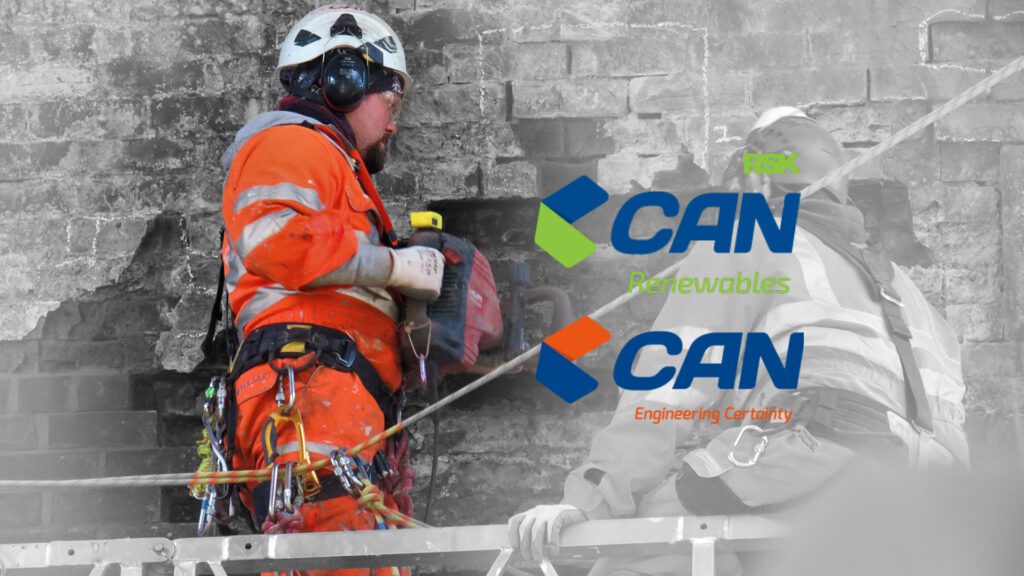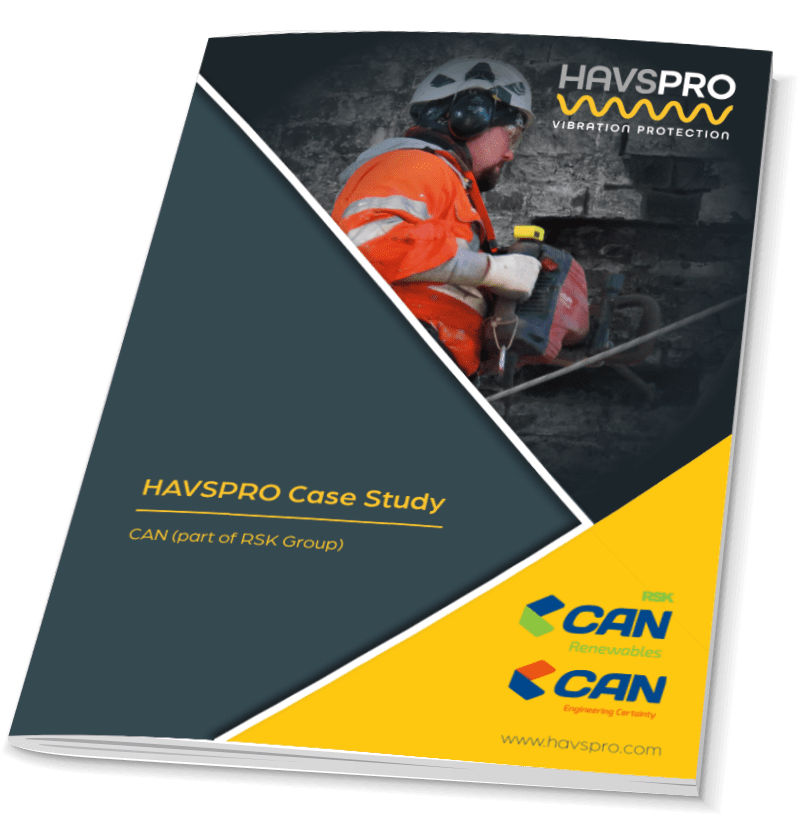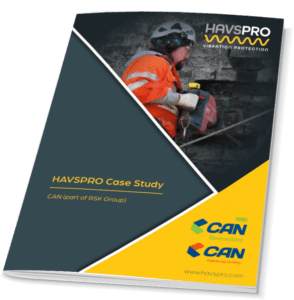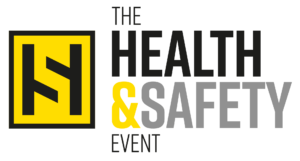This CAN case study highlights the importance of getting your HAVS risk management strategy right for each individual circumstance.
CAN (part of RSK Group) was established in the UK in 1983, and now employs around 200 staff. With their Head Office in Chesterfield, Derbyshire, they undertake various civil engineering work, structural installations, and maintenance projects, all of which utilise specialist access (rope access) across the UK and abroad.
HAVS is a priority at CAN
The work that CAN undertakes often involves handheld tools that emit high levels of vibration.
Having identified vibration exposure as a critical risk factor, the CAN Senior Leadership Team wanted to ensure they were protecting their workforce as much as possible and introduced multiple processes and control measures to reduce the risk of HAVS to their personnel.
This included;
- designing out the need of using hand-held vibrating / percussive tools where possible,
- use of lower-vibration alternatives,
- a rigid maintenance programme for existing tools,
- regular health surveillance programmes, and,
- a maximum 100 HSE points limit for all operatives (the limit is lowered further if any health restrictions exist).
This last point is an additional measure that far out-reached CANs regulatory obligations.
In addition to that, for projects which are identified as high HAVS risk (where a risk exists to exceed 100 HAVS points), a real-time vibration measuring and monitoring system – HAVSPRO is being utilised.
As a result, CAN are industry-leaders when it comes to managing the risk of vibration exposure to as low as possible.
CAN SHEQ Manager, Galina Hobson acknowledges “The biggest problem we had was ensuring that the exposure is estimated correctly as it is sometimes very difficult to understand, prior to project start, how long it will take to do a certain task (i.e. using a chain saw for devegetation or a breaker / grinder for concrete repairs). The condition of the tool also plays a big part in understanding the actual level of vibration our personnel can be exposed to.
In certain cases, we found it hard to rely on average data from standard magnitude libraries, or be confident that trigger time is being recorded correctly. We needed certainty to keep our staff safe, and to make the rest of our control measures, and strategies, effective.”
The HAVSPRO system
An integral pillar in their HAVS risk management strategy was the HAVSPRO system. Galina goes on to explain:
“As the HSE states, there is no legal requirement for continual monitoring and recording of vibration exposure. We have recognised that, and are using the system only for projects where it is very difficult to assess the level of vibration due to the nature of the tasks performed.
The HAVSPRO system works perfectly in those ‘not so straightforward’ cases as it measures vibration exposure in real-time and converts this into HSE points. Combined with the real-time alerts, we can be certain that the accuracy of the vibration exposure for each operative is always within safe levels. This type of proactive system is exactly what we need.”
Galina goes on to say “The HAVSPRO’s ease of use is another significant factor that makes it the first choice for CAN. It doesn’t involve the users doing anything other than clicking it on and off the tool in-hand. And it doesn’t interfere, in any way, with the work being carried out. With a significant number of sites operating at any one time, and the scale of tools and users across these sites, we needed a system is easy to implement, set-up and roll-out to our teams.”
Partners, not suppliers
“The excellent customer service from the team at SIXIS, from the Managing Director down, is what makes HAVSPRO our first choice, but it’s more than that.
SIXIS are committed to reducing incidences of HAVS and are responsive to our specific needs. They haven’t just sold us a system, they work with us to develop and maintain an ever-evolving safety culture when it comes to HAVS. From our first conversations, through to now, we have advice, guidance, and support with our wider HAVS management program at the end of the phone. SIXIS have formed a meaningful part of our strategy.”
Data-driven decision-making
“The continuous measuring and monitoring of vibration data allows us to provide accurate reporting on a variety of elements on-site which are hard to estimate. This together with real-time alerts help us to ensure that we are in complete, proactive control over the level of exposure our operatives are actually exposed to.
The data in the reporting system is useful in a number of ways:
- A valuable tool to assist with active monitoring processes across the company
- A great source of data for our estimating department to base their work on. It gives them accurate data regarding workloads, resources required and average task timelines.
- Better tool management and a great help for our maintenance teams as they can see which tools are most used and if any produce unusually high levels of vibration. Then a decision can be taken on whether these tools need servicing more frequently or replacing sooner or later than anticipated.
Basically, this data helps to make many areas of our business more efficient, but most importantly, it helps me protect our staff consistently.”
Feedback from CAN operatives
“Feedback from operative is positive, mainly due to its ease of use. They can simply click it on and off the tools as they use it and that’s it. Site Managers are very happy as well as using a completely automated system removes the need of completing daily HAVS registers (for all exposures above 40 points). Also the alerts they get on their phones mean they can proactively interject in the task execution where vibration exposure is reaching 100 points.”
And finally...
Galina finishes by stating “I am a self-proclaimed HAVS risk management evangelist and I believe there are still many large organisations who are risking the health of their operatives because they aren’t fully managing the risk posed by vibration exposure. There is a cultural change that has started but it still needs to develop to ensure as many of the 2 million at risk from HAVS are fully protected.
The consequences of vibration exposure are rarely seen or experienced immediately so it is easy to overlook the consequences of over-exposure but that shouldn’t make it any less of a priority.”
Galina Hobson, Health and Safety Quality Environment Manager, CAN (part of RSK Group)
Download our Brochure
It monitors individual tool vibration levels and the exposure each person has to it.
HAVSPRO then collates all this data and creates customisable reports to help you prevent overexposure.
Find out everything you need to know in our brochure – simply complete the form!




